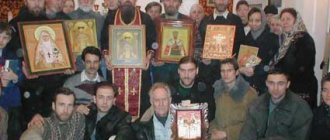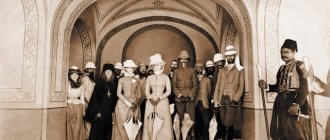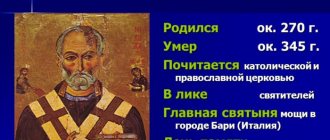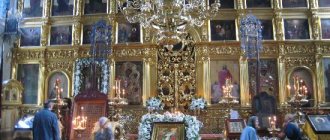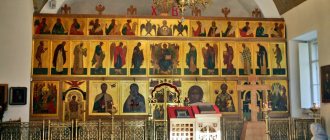Olga. The amazing fate of Nicholas II's sister. Her love story.
What a beautiful, harmonious family in the photo, isn’t it?
There are four of them - Olga Aleksandrovna Romanova-Kulikovskaya and Nikolai Aleksandrovich Kulikovsky and their two charming boys - Tikhon and Gury. Family is like family, you will say, and in some ways you will be right. This strong, friendly, loving family has gone through difficult and sometimes simply monstrous trials, and is always together, holding hands, through life! They stood like “steadfast tin soldiers.” Moreover, this family could not have happened at all...
(Emperor Alexander III with Empress Maria Feodorovna)
The story of Olga Romanova-Kulikovskaya began simply fabulous. At the beginning of June 1882, in the family of Emperor Alexander III and his wife Empress Maria Feodorovna (née Danish Princess Maria Sophia Frederica Dagmar)
The last, sixth child is born.
(Empress Maria Feodorovna Portrait of Grand Duchess Olga Alexandrovna as a child)
A girl is born god-born, for that is what children were called, born during the reign of her parents. Little Olenka came into this world to become a support for her loved ones. But the terrible future was still far away, but for now, loving parents immensely pampered their baby, fulfilling her little childish whims. A bright artistic talent manifested itself in the young princess very early, and the Pope-Emperor hired leading teachers from the Academy of Arts, including Makovsky, Zhukovsky and Vinogradov, to develop it.
(Empress Maria Feodorovna and Grand Duchess Olga Alexandrovna)
Alas, Olga was not a natural beauty. Both she herself and her mother admitted this. However, the young princess herself did not care. Painting and then newfangled photography became a real passion. Olga preferred to develop the photos herself. She also secretly ran away to the stable. Olga adored horses, and animals in general. They will become the first heroes of her paintings.
(Grand Duchess Olga Alexandrovna 1893)
(Serov V.A. Portrait of Grand Duchess Olga Alexandrovna 1893)
In her memoirs, the Grand Duchess recalled this period of her life: “ Even during geography and arithmetic lessons, I was allowed to sit with a pencil in my hand, because I listened better when I was drawing corn or wild flowers.”
Alas, three circumstances still shook the young soul of the royal daughter.
One of Olga's first art teachers committed suicide after being falsely accused of plagiarism. In honor of her beloved teacher, Olga will dedicate many of her paintings in his honor.
In 1888, when Olga was barely 6 years old, an attempt was made on her family during a train trip. The crumpled royal compartment will practically be lifted on his back by Alexander the Third himself so that the family can get out. But this will undermine the emperor’s health - kidney complications will arise, which will lead to death.
The death of her beloved father will be the third shock for 12-year-old Olga.
And then, her beloved brother, Nicholas II, will ascend to the throne.
It should be noted that despite her mischievous character, the young princess had a surprisingly kind and flexible character. And this trait (compliance) will be so valued by the whole family.
Olga grew up, and, alas, did not turn into a written beauty. But she became a companion and the closest person to her mother. When the princess turned 18 (in 1900), the question of her marriage arose.
And here, I completely refuse to understand her mother, the Dowager Empress Maria Feodorovna, who did not want to part with her beloved daughter. Maria Fedorovna understood that her high-born daughter would have to find an equal match, i.e. find the prince. Most often, husbands for the royal daughters were found among other reigning royal houses, which actually meant separation from their homeland. But the Dowager Empress categorically refused to part with Olga. This meant that the prince should be found in Russia. And such an option was found... The Russified branch of the German princes of Oldenburg lived in Russia since the time of Emperor Nicholas I and were relatives of the Romanovs. Empress Maria Feodorovna was friends with Princess Eugenia of Oldenburg (née Leuchtenberg). The only son of Princess Eugenie and her husband Alexander of Oldenburg, Prince Peter Alexandrovich of Oldenburg, was by no means an enviable groom (he was 14 years older than 18-year-old Olga). But that was not the most important thing. “Not a young groom” was far from a man, he was not at all interested in women, he loved cards and wine and... men.
Did Maria Fedorovna know that her future son-in-law was gay? Undoubtedly. For relatives, even the most distant ones, and especially at the court, which was teeming with grand-ducal intriguers, knew everything. It was no secret that the husband of Grand Duchess Elizabeth Feodorovna (sister of Empress Alexandra Feodorovna, who was the wife of Nicholas II), Grand Duke Sergei Alexandrovich, also had a weakness exclusively for men. And nothing, everyone was happy with everything, the main thing is that the marriage was equal, dynastic.
So, Olga Alexandrovna was destined to enter into this strange marriage (on July 27, 1901, her marriage to Prince Peter Alexandrovich Duke of Oldenburg took place in the Gatchina Palace Church), satisfying the ambitions of both mothers. Empress Feodorovna remained with her daughter, Princess Eugenia of Oldenburg (Olga's mother-in-law) became related to Tsar Nicholas II (which was very prestigious). From now on, Grand Duchess Olga Alexandrovna Romanova herself, aka the newly-minted Princess of Oldenburg, remained out of business.
(Grand Duchess Olga Alexandrovna 1901)
(Grand Duchess Olga Alexandrovna and her first husband Prince Peter of Oldenburg)
(they are)
The prince spent his wedding night in 1901 not on the marital bed, but at the gambling table with his fellow officers. So what is next? “ In the fifteen years of our marriage, the Prince of Oldenburg and I have never been in a marital relationship
“- this is how Grand Duchess Olga Alexandrovna recalled fifty years later.
Such was her family life and therefore she gave all her unspent love to her nieces, the girls daughters of Nicholas II. Especially to her goddaughter, Princess Anastasia: “ I loved her for her fearlessness.
She never whimpered or cried, even if she was in pain. She was a real daredevil... This child was dear to me, like my own daughter .” In a velvet box, the Grand Duchess kept things associated with the memory of her goddaughter and the Royal Family all her life - a small silver pencil, a tiny bottle of perfume, a brooch...
In the first year of married life, Olga was happy with everything. She chose to retire to the Oldenburgsky estate, in Ramon. For a whole year Olga Alexandrovna practiced painting. The newly-minted husband Peter of Oldenburg was also generally satisfied with the marriage; he once again began an affair with a young lover and confessed his love to him in poetry. And what about Olga? The fact is that she didn’t know about the sexual side of life... At all. The royal daughters were not initiated into such secrets until marriage, leaving this role for the future chosen one. Such ignorance was to Peter's advantage. But a year later, the newly-minted wife still became worried. There were no children, but Olga really wanted them. They appeared among her family friends and Olga decided to ask them... Having learned the reason for her childlessness, Olga Alexandrovna realized that she did not have a family as such.
In April 1903, during a parade in the Pavlovsk Palace, Grand Duchess Olga saw him Nikolai Alexandrovich Kulikovsky, who was serving in Her Majesty's Cuirassier Life Guards Regiment, commanded by Nicholas II's younger brother, Grand Duke Mikhail Alexandrovich. Olga fell in love and her feelings were mutual. She felt that she could become a happy woman. It was from this moment that her desperate 13-year struggle for personal happiness began.
(Colonel N.A. Kulikovsky
and Grand Duchess Olga Alexandrovna.)
First, Olga Alexandrovna started talking about divorce from her legal husband, Peter of Oldenburg. But he turned out to be categorically against divorce, because through Olga he was related to the emperor himself! But against the possible connection between his wife and N.A. Kulikovsky did not object, giving her complete freedom, because. he was free on the side. But Olga Alexandrovna herself was categorically not happy with this option. She could not afford to have children from her beloved man while legally married to another. In addition, Olga was too well brought up and did not allow adultery on the side even in her thoughts. Then she will write a letter to her brother the emperor, begging him to dissolve what is essentially a fictitious marriage in order to marry her lover. And she received a categorical refusal from him. Then Olga began to literally bombard her brother with tearful letters, because only he could give the go-ahead for her divorce. The matter was further complicated by the fact that in 1907 another scandal occurred in the emperor’s family. The emperor's own younger brother, Grand Duke Mikhail Alexandrovich (Kulikovsky's superior), in whose favor Nicholas II abdicated in 1917, secretly married his longtime mistress Natalya Wulfert (née Sheremetyevskaya). This person was twice divorced at the time of the royal wedding, and therefore the marriage was considered morganatic, giving her the title of “Countess Brasova,” because Grand Duke Mikhail Alexandrovich owned the Brasovo estate. The emperor was very angry with his brother, so he categorically refused to divorce his sister for many more years in order to avoid another family scandal. Olga was truly unhappy...
(Grand Duchess Olga Alexandrovna with her brother Grand Duke Mikhail Alexandrovich)
And as a mockery from his own brother, the Tsar personally saw to it that Colonel Kulikovsky was included in the retinue of the Prince of Oldenburg. Olga, Prince of Oldenburg and Nikolai Kulikovsky were supposed to live in the same palace for many years.
In 1914, when the First World War broke out, Colonel Kulikovsky was authorized to command the Akhtyrsky Hussars in Rovno, near the Polish-Austrian border. Olga went to the front line following her sister Nikolai, worked in hospitals in Rovno, Lvov, and also in Kyiv, where she equipped the main hospital at her own expense. By the way, Olga Alexandrovna herself bore the title of Honorary Commander of the 12th Akhtyrsky Hussar Regiment.
(Grand Duchess Olga Alexandrovna 1914)
(Grand Duchess Olga Alexandrovna Sister of Mercy)
(Grand Duchess Olga Alexandrovna among the wounded in hospitals)
Ian Worres wrote: “ The soldiers could not believe that the smiling, fragile sister of mercy, looking after them with such care, was the sister of their King. Many were baptized, thinking that they were seeing a vision. Breaking the tradition according to which the Grand Duchesses headed infirmaries or hospitals, Olga Alexandrovna decided to work as an ordinary sister ... "
Olga’s hands worked wonders; the doctor specifically called her when it was necessary to do a painful and painful dressing.
One little fact. Olga Aleksandrovna writes: “ The other day, one orderly put one wounded man on the ship without first removing the T-shaped bandage... and, of course, everything remained in the bandage.
I had to wash the patient a lot for a long time and throw away a good bandage ” (like this... the emperor’s daughter did not disdain to shovel the crap out from under the patient, but are today’s “princesses” of the people like that, who for some reason consider themselves to be among the elite of Russia???) Olga continued and then sketch what is happening around you in your album.
(Grand Duchess Olga Alexandrovna in moments of rest)
(Princess Olga Alexandrovna)
(Emperor Nicholas II’s visit to a military hospital in Kyiv. Grand Duchess Olga Alexandrovna stands nearby, 1916)
At the end of 1916, the princess's brother, Emperor Nicholas II, came to inspect her hospital. The atmosphere, as it turned out, of the last meeting of the older brother and younger sister, captured in the photograph of the field chronicle, was tense. At the end of his short stay, the Tsar gave his sister a photograph of himself and a handwritten letter in English - so that others could not read it - annulling her marriage to the Prince of Oldenburg and blessing her marriage to Colonel Kulikovsky. The most interesting thing is that when the marriage was officially dissolved, the reason for the divorce was indicated, such as “the marriage did not take place and the Prince and Princess of Oldenburg never became spouses, due to the fact that the prince was afraid of his wife’s virginity,” and Olga was divorced as a virgin. The ceremony took place immediately, in November 1916. Thirteen years of waiting were left behind and Grand Duchess Olga Alexandrovna finally became Kulikovskaya.
(Wedding photograph. Grand Duchess Olga Nikolaevna and Colonel Nikolai Kulikovsky)
(Olga with her husband and mother - Dowager Empress Maria Feodorovna)
On November 4, 1916, Nikolai Alexandrovich Kulikovsky became her husband and friend until the end of her days. Their wedding took place in the Church of St. Nicholas in Kyiv. The marriage became morganatic. And the Dowager Empress did not recognize her son-in-law as her equal (which she emphasized in every possible way until the end of her life), but what did it all mean when two loving hearts, 13 years after they met, found their happiness and were able to be together! In August 1917, in the Crimean Ai-Todor, the couple had their first child, son Tikhon.
Empress Maria Feodorovna wrote about it this way:
“At times, when it seems that it is no longer possible to bear it all, the Lord sends us something like a ray of light. My dear Olga gave birth to a baby, a little son, who, of course, brought such unexpected joy to my heart...”
— Empress Romanova Maria Fedorovna
Then there were wanderings around Russia, the birth of his second son Gury in 1919, and finally he managed to end up with relatives in Denmark; the family of Empress Maria Feodorovna was reunited in 1920 in Vieder.
In 1918, the family was overtaken by a double (to say the least!) misfortune.
In June 1918, Grand Duke Mikhail Alexandrovich, in whose favor the emperor abdicated, was shot in Perm. His wife, Countess Natalya Brasova, and her son George managed to flee abroad. A month later, in Ipatiev’s house in Yekaterinburg, the entire family of the last emperor ended their life’s journey. At first it was just rumors.
In 1919, when the Dowager Empress Maria Feodorovna and her daughters and their families were in the Livadia Palace, they were visited by investigator Sokolov, who presented evidence of a monstrous crime in Yekaterinburg.
“No, this can’t be!!! I don't believe!" - Empress Maria Feodorovna said in despair.
A few days later, it was Olga who witnessed such a picture: she (Olga) went into her mother’s room (Maria Fedorovna locked herself in it for several days) and saw how the empress, all in a black robe, blackened with grief, was lying on the bed. There were many lit candles burning around and between them there were photos, many photos of the family of Nicholas II. She accepted this terrible fact... without shedding a single tear in public. What was going on in her soul? Only she and the Almighty know.
Many years later, already in Denmark, when the Dowager Empress Maria Feodorovna began to be “harassed” by the false children of Nicholas II, she categorically rejected them all. Maria Feodorovna DID NOT MET ANY OF THE IMPOSTERS!!! And she warned Olga: “Olga, all these people (false children of Nicholas II) just want to profit from our grief. Don't date them."
But the heart of her loving sister and aunt (Olga was the godmother of Nicholas II’s youngest daughter Anastasia) one day could not stand it and trembled... Secretly from her mother, she met the same Anna Anderson, who so zealously fought for recognition of herself as Princess Anastasia. Alas, Olga was in for a severe disappointment. She never met any of the impostors again.
Life went on...
(Grand Duchess Olga Alexandrovna with her husband and children 1920)
After the revolution, life in Denmark practically had to start from scratch. During this period, Olga Alexandrovna's family was located in the Danish Amalienborg Palace, together with the Dowager Empress Maria Feodorovna. In 1928, after the death of the Empress mother (who died in Olga’s arms), the Grand Duchess’s family acquired the Knudsminde
in Bollerup, 24 km from Copenhagen, where she was engaged in agriculture, Nikolai Alexandrovich went into business, and Olga, in her free time, continued to draw and sell her paintings.
(Grand Duchess Olga Alexandrovna, on one of the long winter evenings in Denmark, on the veranda of her house in Ballerup.)
The sons who served in the Danish army grew up. They created families. Olga accepted her daughters-in-law, where the main criterion was love... without conditions.
(Grand Duchess Olga Alexandrovna with her sons Tikhon and Gury)
By the way, Tikhon and Gurniy got married more than once:
Tikhon Nikolaevich (1917-1993) Was married three times
.
(Tikhon Nikolaevich with his last wife Olga Nikolaevna Kulikovskaya-Romanova, nee Pupynina, She is the author of the book “The Royal Family”)
1) In 1942 in Copenhagen he married Agnet Petersen (1920-2007). Divorced in 1955, there were no children from the marriage.
2) On September 21, 1959, in Ottawa, he married Livia S:)styan (June 11, 1922 - June 12, 1982), from the marriage he had one daughter, Olga Tikhonovna (b. January 9, 1964 in Toronto).
In 1994, Olga Tikhonovna married Canadian Joe Cordeiro. The couple had four sons:
Peter (b. 1994),
Alexander (b. 1996),
Mikhail (b. 1999),
Victor (b. 2001).
Today Olga Tikhonovna lives in Toronto, she is a successful business lady and is the general director of her own company, which offers training courses to expand your financial capabilities.
(Olga Tikhonovna)
We can say with confidence that Grand Duchess Olga Alexandrovna could be proud of her granddaughter, who achieved everything in her life herself, and not thanks to her origin.
3) On June 8, 1986, in Toronto, he married Olga Nikolaevna Pupynina (b. September 20, 1926). See photo just above.
Guriy Nikolaevich (1919-1984) Bydl married twice.
1) On May 10, 1940, Guriy Nikolaevich married Ruth Schwartz (b. 02/06/1921), the daughter of a small merchant in Ballerup. The couple had three children in their marriage:
Ksenia (born July 29, 1941).
Her son Kulikovsky-Larsen, Paul Edward Kulikovsky, b. 1960.
Leonid (born May 2, 1943)
Alexander (born November 29, 1949)
In 1956, the couple divorced. A few years later he married Aza Gagarina (b. 01.08.1924).
(The photo shows the Kulikovsky family having breakfast on the veranda of their house in Ballerup. From left to right: Agnet (Tikhon’s first wife), Grand Duchess Olga Alexandrovna, Gury Nikolaevich, Leonid Guryevich, Ruth (Gury’s first wife), Ksenia Guryevna, Nikolai Alexandrovich Kulikovsky. Photo 1945.)
During World War II, Olga's sons fell into German occupation, but returned home alive. And after the war - a new test. The Grand Duchess's family was persecuted by the KGB. An absurd accusation - helping Russian prisoners of war emigrate. Olga Alexandrovna was declared an enemy of the Soviet people. Denmark did not want to spoil relations with the Soviet Union, but it also did not plan to extradite a relative (let me remind you that Olga’s mother is a former Danish princess). Through their diplomatic connections, the Royal Family of Denmark sends the Grand Duchess's family to Canada.
So in 1948, at the age of 66, Grand Duchess Olga Alexandrovna found her final refuge in Toronto. “ I couldn’t believe that I was leaving my homeland forever. I was sure that I would return... I had a feeling that my flight was a cowardly act, although I came to this decision for the sake of my young children. And yet I was constantly tormented by shame...”
- this is what she wrote in her memoirs.
(Canadian passports of the Kulikovsky couple)
(Grand Duchess Olga Alexandrovna and Nikolai Kulikovsky)
The princess was always remembered and loved, letters were written to her from all over the world.
Nikolai Kulikovsky died in 1958, she outlived him by two years.
Before her death, the Grand Duchess received Holy Communion from Bishop John (Shakhovskoy) of San Francisco. Olga Alexandrovna died on November 24, 1960 and was buried in the North York Russian cemetery in Canada next to her beloved husband Nikolai Alexandrovich, who died two years earlier.
Thus ended the story of the last Grand Duchess, who sunk into oblivion of the Russian Empire...
Based on the book “The Last Grand Duchess” by Ian Worres
PS I will make paintings of Grand Duchess Olga Alexandrovna a separate post.
Thank you for your attention.
Your Natasha.
Contemporaries about Grand Duchess Olga Alexandrovna[ | ]
Protopresbyter Georgy Shavelsky:
Grand Duchess Olga Alexandrovna, among all the persons of the imperial family, was distinguished by her extraordinary simplicity, accessibility, and democracy. On his estate in Voronezh province. she completely grew up: she walked around the village huts, nursed peasant children, etc. In St. Petersburg, she often walked on foot, rode in simple cabs, and really loved to talk with the latter.
— Protopresbyter Georgy Shavelsky
Back in 1905, in Manchuria, General Alexei Kuropatkin, who knew her simplicity and democratic taste, jokingly said that she was “red-faced”:
My next date was with my boyfriend. Princess Olga Alexandrovna was born on November 12, 1918 in Crimea, where she lived with her second husband, captain of the hussar regiment Kulikovsky. Here she became even more at ease. It would be difficult for someone who didn’t know her to believe that this was the Grand Duchess. They occupied a small, very poorly furnished house. The Grand Duchess herself nursed her baby, cooked and even washed the clothes. I found her in the garden, where she was pushing her child in a stroller. She immediately invited me into the house and there treated me to tea and her own products: jam and cookies. The simplicity of the situation, bordering on squalor, made it even more sweet and attractive.
— General Alexey Kuropatkin
A charming woman, a real Russian person, of amazing charm... Olga Alexandrovna is a warm comrade of our officers. How many secrets, secrets, sorrows, novels of our youth the princess knows!
- Captain 2nd Rank of the Guards Crew Nikolai Sablin
Related literature[ | ]
- Manoilenko Yu. E., Manoilenko A. S.
“By his infinite mercy.” To the 110th anniversary of the formation of the St. Petersburg Committee for Assistance to the Lower Ranks of the Manchurian Armies // Military Historical Journal. - 2021. - No. 7. - P. 48-50. - Rasskazova L. V.
A. I. Kuprin and the Imperial Family (Russian) // Personality and creativity of A. I. Kuprin in the context of Russian culture of the XX-XXI centuries. Materials of the All-Russian scientific and practical conference dedicated to A. I. Kuprin. Penza, September 5, 2013. - Penza, 2013. - pp. 142-147. - Olga (storfyrstinde af Rusland). 25 kapitler af mit liv / Olga Alexandrovna; redaktion: Paul Kulikovsky og Karen Roth-Nicholls. Aschehoug Dansk Forlag, 2006. - 150 sider. ISBN 87-11-22742-7
- Olga Alexandrovna, Grand Duchess. 25 chapters of my life / comp. L. A. Kulikovskaya, P. E. Kulikovsky, K. Roth-Nichols, S. Woolmans; lane from English edited by L. R. Kharitonova. - M.: Kuchkovo Pole, 2021. - 328 p.: ill.; 16 l. color ill. ISBN 978-5-9950-0747-0
Notes[ | ]
- Media files on Wikimedia Commons
- ↑ 1 2
Olga Aleksandrovna //
Encyclopedic Dictionary
- St. Petersburg: Brockhaus - Efron, 1897. - T. XXIa. — P. 911. - ↑ 1 2
Alexander III //
Encyclopedic Dictionary
/ ed. I. E. Andreevsky - St. Petersburg: Brockhaus - Efron, 1890. - T. I. - pp. 411-413. - ↑ 12
Olga Alexandrovna // Kunstindeks Danmark (Danish) - ↑ 1 2 Lundy DR
Olga Aleksandrovna Romanov, Grand Duchess of Russia // The Peerage (English) - Government Gazette. - 28.6.1901. - No. 165. - P. 1 (The Highest Manifesto).
- Krechetnikov A.
The Last Grand Duchess: Love, Dangers, Treasures
(unspecified)
. BBC Russian Service (August 24, 2017). Date accessed: August 25, 2021. - Emperor Nicholas II and the events of January 9, 1905 in St. Petersburg (Russian) (inaccessible link). Date accessed: June 19, 2021. Archived May 23, 2009.
- Government Gazette. - 21.9.1916. - No. 203. - P. 1.
- Zarubin A. G., Zarubin V. G.
Without winners. From the history of the Civil War in Crimea. - 1st. - Simferopol: Antiqua, 2008. - P. 113, 365. - 728 p. — 800 copies. — ISBN 978-966-2930-47-4. - Ian Worres.
The Last Grand Duchess: Her Imperial Highness Grand Duchess Olga Alexandrovna. — Key Porter Books, 2001. — P. 201. — 260 p. — ISBN 1552633020.
Memory[ | ]
In the Danish city of Bollerup (Danish)Russian, where she lived with her husband and children from 1930 to 1948, the Olga Alexandrovna Museum was created.
In 2003, director Sonya Westerholt made the documentary film “Olga - the Last Grand Duchess” (a co-production of Russia, Denmark and Canada).
In the city of Pavlovsk, Voronezh region, on November 4, 2021, as part of traditional annual celebrations, a memorial plaque in honor of the Grand Duchess, who has been the patroness of this educational institution since 1913, was unveiled on the building of the Olginskaya gymnasium.
